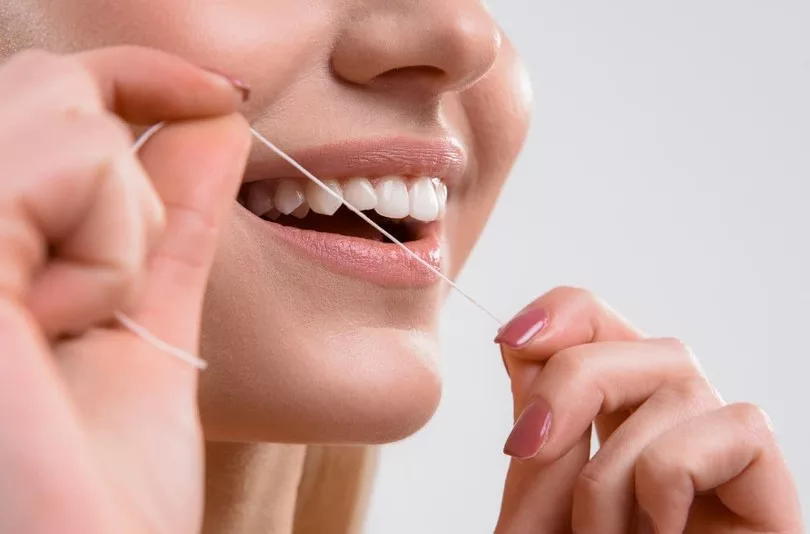The Underrated Power of Flossing
Often overshadowed by brushing, flossing is an equally vital part of oral hygiene. It’s about more than just removing food particles; it’s a fundamental practice for maintaining overall mouth health. This guide dives into the world of flossing, uncovering its importance, techniques, and tips to make it an integral part of your daily routine.
Flossing: A Cornerstone of Oral Health
Flossing plays a crucial role in preventing gum disease, tooth decay, and halitosis (bad breath). As noted by a dentist Narre Warren, while brushing cleans the surface of the teeth, flossing is essential for removing plaque and food particles from between the teeth and under the gumline – areas where a toothbrush can’t reach.
The Benefits of Regular Flossing
Regular flossing can prevent tartar build-up, reduce the risk of gingivitis (gum inflammation), and promote healthier gums. It also contributes to fresher breath and can even have a positive impact on overall health by reducing the risk of oral infections.
Mastering the Art of Flossing
Proper flossing technique is key to reaping its full benefits. Incorrect flossing can potentially harm the gums, so it’s important to get it right.
Step-by-Step Flossing Guide
Cut a piece of floss
About 18 inches long is ideal. Wind most of the floss around each middle finger, leaving an inch or two to work with.
Hold the floss taut
Use your thumbs and index fingers to hold the floss tightly.
Gently guide the floss
Slide it up and down between your teeth. Curve it around the base of each tooth, going beneath the gumline. Be gentle to avoid cutting or bruising your gums.
Use clean sections of floss
As you move from tooth to tooth, unroll fresh floss from around your fingers.
Choosing the Right Floss
There’s a variety of dental floss available, and the right type for you can depend on the space between your teeth and personal preference.
Types of Dental Floss
Waxed and Unwaxed Floss
Waxed floss is easier to slide between closely spaced teeth, while unwaxed floss can be more effective for slightly wider gaps.
Dental Tape
Broader and flatter than standard floss, dental tape is a good choice for those with larger gaps between their teeth.
Water Flossers
An alternative for those who find traditional flossing difficult. Water flossers use a stream of water to remove plaque and food particles between the teeth.
Overcoming Flossing Challenges
Many people struggle with flossing, whether due to sensitive gums, braces, or simply finding it a tedious task. However, there are ways to make flossing easier and more effective.
Tips for Easier Flossing
For Sensitive Gums
If your gums bleed or are sensitive, use a softer floss and be gentle. Over time, as your gums become healthier, flossing will become more comfortable.
For Braces or Dental Work
Use a floss threader or a specialized orthodontic floss to navigate around braces or other dental work.
The Role of Flossing in Preventing Dental Problems
Flossing is not just about cleaning teeth; it’s a preventive measure against various dental issues.
Preventing Tooth Decay and Gum Disease
By removing plaque, flossing plays a significant role in preventing tooth decay and gum disease. Plaque contains bacteria that can lead to cavities and gum infections if not regularly removed.
Flossing for Children: Building Healthy Habits
Introducing flossing to children is crucial for developing lifelong oral hygiene habits. It’s important to teach them the value and technique of flossing from a young age.
Making Flossing Fun for Kids
Use flavored floss, floss picks, or have them watch you floss to make the process more appealing and fun for them.
The Connection Between Flossing and Overall Health
Oral health is deeply connected to overall health. Diseases like diabetes and heart disease have been linked to oral health issues.
Flossing and Its Broader Health Implications
Regular flossing can help in reducing the risk of health problems associated with poor oral hygiene, such as heart disease, stroke, and diabetes.
Common Flossing Myths Debunked
There are several myths surrounding flossing that can deter people from incorporating it into their daily routine.
Debunking Flossing Misconceptions
- Myth: If your gums bleed, you should stop flossing.
- Reality: Bleeding can indicate gum inflammation, often caused by plaque buildup. Regular flossing can improve gum health and reduce bleeding over time.
Flossing as Part of a Comprehensive Oral Care Routine
Flossing is most effective when it’s part of a broader oral care routine that includes regular brushing and dental check-ups.
Integrating Flossing Into Daily Oral Hygiene
For optimal oral health, floss at least once a day, brush twice daily, and visit your dentist for regular check-ups and cleanings.
Embracing Flossing for a Healthier Smile
Flossing is a simple yet powerful tool in maintaining oral well-being. By understanding its importance, mastering the technique, and making it a part of your daily routine, you can significantly improve your oral health and contribute to your overall well-being. Remember, a little floss goes a long way in keeping your smile healthy and bright!





